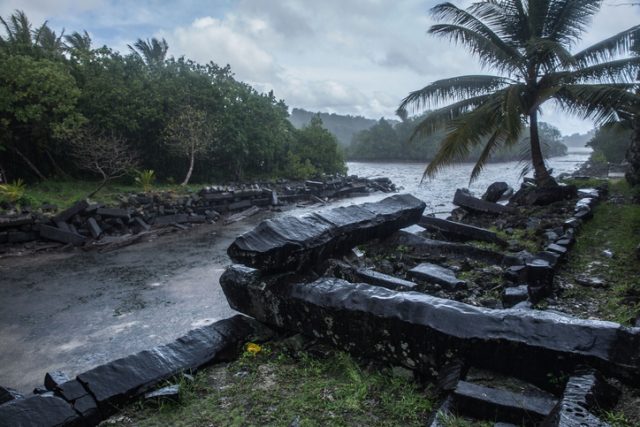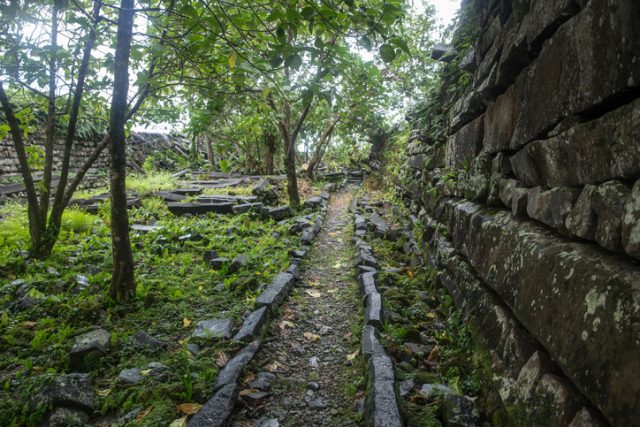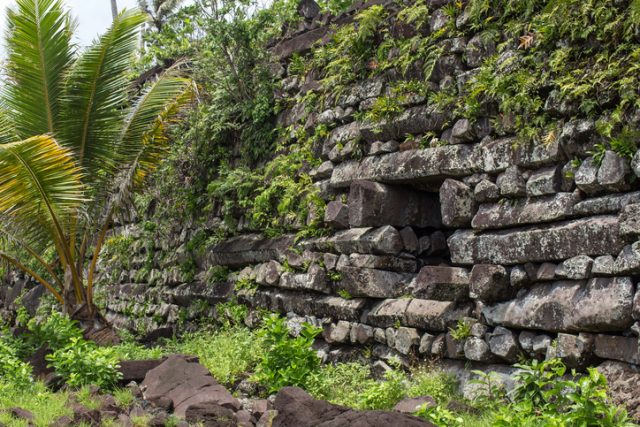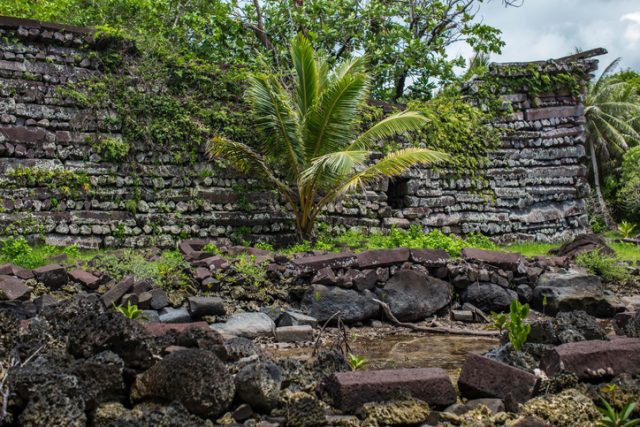This mysterious ancient city is built on a reef just off the shore of Pohnpei Island in the Federated States of Micronesia. The buildings of this city do not have their foundations in the ground, but rather are built on top of man-made platforms of stone and coral.
The name Nan Madol roughly translates to “space in-between,” a reference to the many channels and canals surrounding the 92 islets. But, as Gane Ashby writes in his book Pohnpei, An Island Argosy, the island’s initial name was Soun Nan-leng, which means “the Reef of Heaven.”
Given its beauty, the numerous waterways between islets, and its sheltered position in a lagoon, Nan Madol is nicknamed the “Venice of the Pacific.” The stone walls around the city’s perimeter enclose an area around one mile long and half a mile wide.

Its history is both long and fascinating. In spite of its small size, the island holds many secrets.
Archaeologists sometimes refer to it as the mythical Atlantis. And this is where the mystery has its beginnings. The structures on this island are built using colossal stones that look as though giants must have laid them.
What researchers found is that this place was called home by the Saudeleur Dynasty. But the story of this place begins much earlier, in the 1st century AD. Seven centuries later, the city was thriving, but the megaliths seem to have been built later, around 1200 AD.
Traditional belief has it that this place was built by the same people who made the city of Leluh, a well-explored ancient city found on nearby Lelu Island. But the latest carbon dating suggests that Nan Madol is actually older than Leluh.
Interestingly, the island was the inspiration for H. P. Lovecraft’s city of R’lyeh in Cthulhu Mythos.

Places as old as this have their fair share of legends. One, in particular, has it that two sorcerers named Olosohpa and Olisihpa themselves formed Kanamwayso (a mythical city). Using their canoe, they arrived here seeking a sacred spot where they could pay their respects to their god of agriculture, Nahnisohn Sahpw.
According to legend, sorcerers managed to levitate these mammoth boulders with the help of a flying dragon. When one of the sorcerers died, the other one created what later would become the Saudeleur Dynasty. The remaining sorcerer married a local village girl and the two of them produced the future rulers of the Saudeleur Dynasty.
Legends aside, this place was where real people once dwelled, though no more than 1,000 (according to some scholars it could have been half this number). The population mainly comprised villagers and a great number of chiefs.

The majority of these little islets were used for residential purposes, though a great number of them also seem to have had a unique purpose, like the mortuary sector, or the sector where food was prepared. In the middle of it all stands the Royal Mortuary that was surrounded by 26-foot-high walls.

Over the years, Nan Madol has evoked many legends, myths, and controversies that even the legendary Atlantis that Plato talked about could not. It is compared to the long-gone mythical lost continent of Mu, where human civilization was said to have been born.
Huge stones always inspire a great number of conspiracy theorists and writers such as David Hatcher Childress and Erich von Daeniken. In his book Evidence of the Gods, von Daeniken wrote that sarcophagi containing platinum bars were found in the waters off Nan Madol. These “platinum coffins,” supposedly discovered by the Japanese after World Wa16r One, are unknown today.
This place has remained abandoned since the start of the 19th century, after a long decline that began in the 15th century, although various researchers and scientists have visited it to attempt to understand its history and construction.
